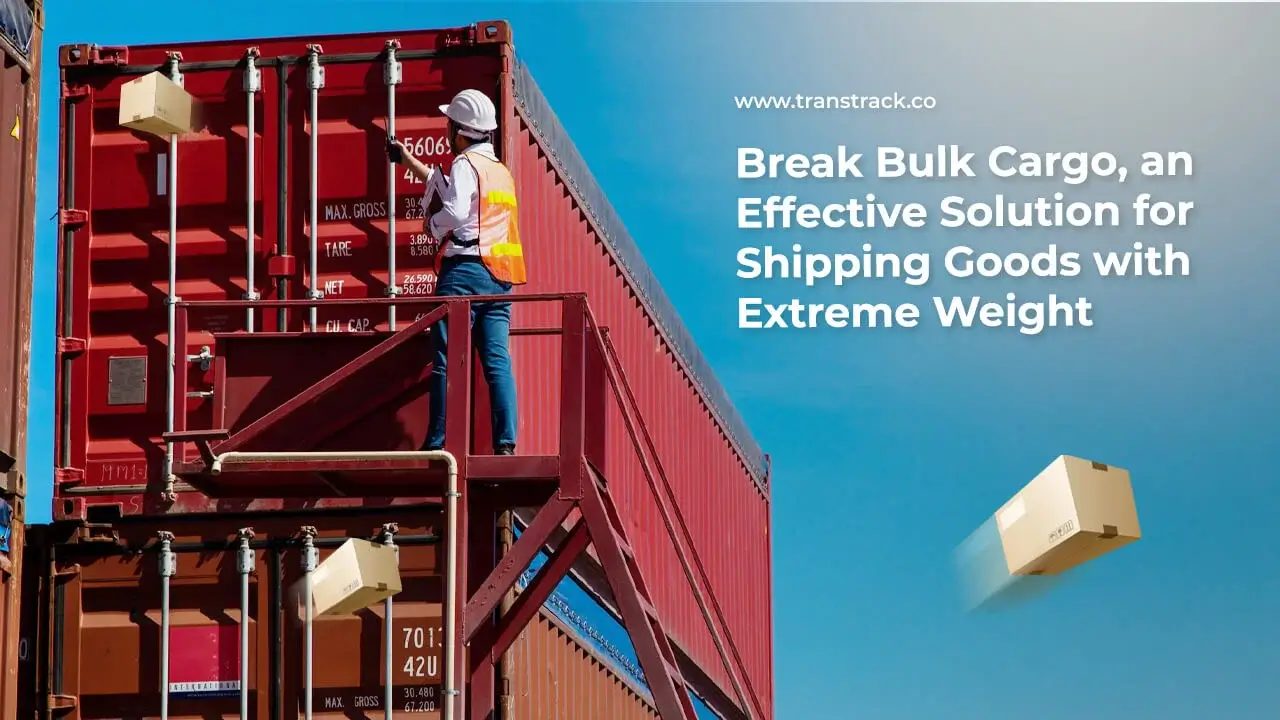Break Bulk Cargo, an Effective Solution for Shipping Goods with Extreme Weight

What would happen if tens of tons of construction steel, hundreds of wooden beams, or giant machines had to be shipped to remote areas with no roads? How can thousands of tons of materials to build a bridge or airport runway get to the project site effectively?
It turns out that there is a special type of transportation that can safely transport these large and heavy loads, namely through break bulk cargo.
Yes, break bulk cargo is a sea transportation service that uses special cargo ships to transport a variety of bulk cargo ranging from wood, steel, machinery, to giant-sized equipment such as heavy equipment.
So, what exactly is break bulk cargo? What are its advantages and disadvantages? What is its role in shipping logistics? Let’s see the full explanation in this TransTRACK!
What is Break Bulk Cargo?
In the world of logistics, break bulk cargo is one of the key elements that play an important role in the transportation and distribution of goods via sea. This sea transportation service refers to a type of cargo shipment that is not packed in standard containers. Instead, these goods are transported individually, rather than in one large load. In other words, each item or group of goods has separate handling during the transportation process.
The cargo of this sea transportation service has extreme variations in size and weight. Starting from small items such as sand, stones, fertilizers weighing a few hundred kilograms, to super large machinery and equipment that can reach hundreds of tons can be transported with break bulk cargo shipments.
The Role of Break Bulk Cargo in Logistics
Break bulk cargo in the context of logistics plays a very important role in managing and distributing goods efficiently. The following is a detailed explanation of the role of this sea transportation service in logistics:
Suitability for Large and Unique Goods
Break bulk cargo is a very suitable solution for goods with dimensions and weight that exceed the capacity of standard containers. Items such as heavy industrial machinery, construction equipment, or other large components can be easily accommodated on break bulk vessels, allowing companies to distribute such items without having to break them down into smaller pieces.
Solution for Toxic or Hazardous Goods
Some goods categorized as dangerous or toxic require special handling and isolation during distribution. These ocean transportation service vessels are equipped with special facilities to address these needs, ensure safety during transit and meet international safety regulations.
Efficient Stacking Arrangement
This marine transportation service vessel allows for optimal stacking arrangements. By loading and moving goods individually, space on the ship can be utilized efficiently. This can reduce the risk of damage from moving goods or unwanted mixing.
Meeting the Needs of the Construction and Mining Industry
The construction and mining industries often rely on Break Bulk Cargo for the distribution of their goods. Heavy construction materials such as steel beams, precast concrete, heavy equipment, and other large components can be easily transported via break bulk vessels. This allows large projects to be supplied efficiently.
Advantages and Disadvantages of Break Bulk Cargo
So what are the advantages and disadvantages of using this sea transportation service compared to containers? Check out the review below.
Advantages of Break Bulk Cargo
The following are the advantages:
Flexibility in Logistics Management
This sea transportation service provides great flexibility in logistics management. Goods can be handled individually, allowing easy customization of schedules and routes according to customer requirements.
Better Goods Handling
With this sea transportation service, each item or group of goods is treated separately. This reduces the risk of damage during transportation, especially for fragile or high-value items.
Suitable for Large and Unique Goods
This marine transportation service is specifically designed to handle large, uniquely shaped, or specially treated goods. This makes it ideal for the construction, mining, and manufacturing industries.
Disadvantages of Break Bulk Cargo
As for the disadvantages, you can see through the discussion below:
Longer Loading and Moving Time
Due to the amount of specialized equipment required, as well as the complex stacking of cargo, the loading and unloading process of this sea transportation service is much longer than standardized containers. This process can extend the total shipping time.
Inefficient for Small Items
Individualized handling processes and special preparations can increase overall shipping costs. This makes this sea transportation service less economical for bulk shipments of small items.
Depends on Availability of Specialized Vessels
The use of marine transportation services is dependent on the availability of specialized vessels that can handle this type of shipment. This limitation can be an obstacle if suitable vessels are not available.
The advantages and disadvantages of this type of ocean transportation service delivery should be carefully considered, especially according to the type of goods to be shipped and the logistics needs of the company. Despite its disadvantages, the advantages of flexibility and the ability to handle specialized goods make break bulk cargo a relevant option in the global logistics industry.
The application of Truck Appointment System (TAS) technology from TransTRACK can be a solution in optimizing the delivery process of break bulk cargo. With TAS, logistics companies can plan and manage truck arrival schedules with precision, reduce waiting time, and avoid congestion in port areas. The system enables efficient coordination between the parties involved, including shippers, receivers, and port operators, so that goods can be transported or loaded smoothly.
In addition, TAS provides real-time visibility into shipment status, enabling accurate monitoring and quick response to changing situations, such as delays or schedule changes. With the integration of TAS in the break bulk cargo logistics process, operational efficiency can be improved, delivery times can be optimized, and the entire supply chain can run more smoothly.
Topic





